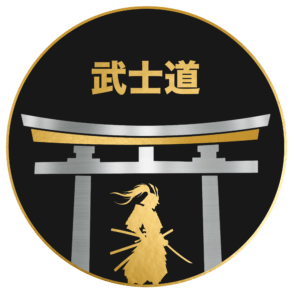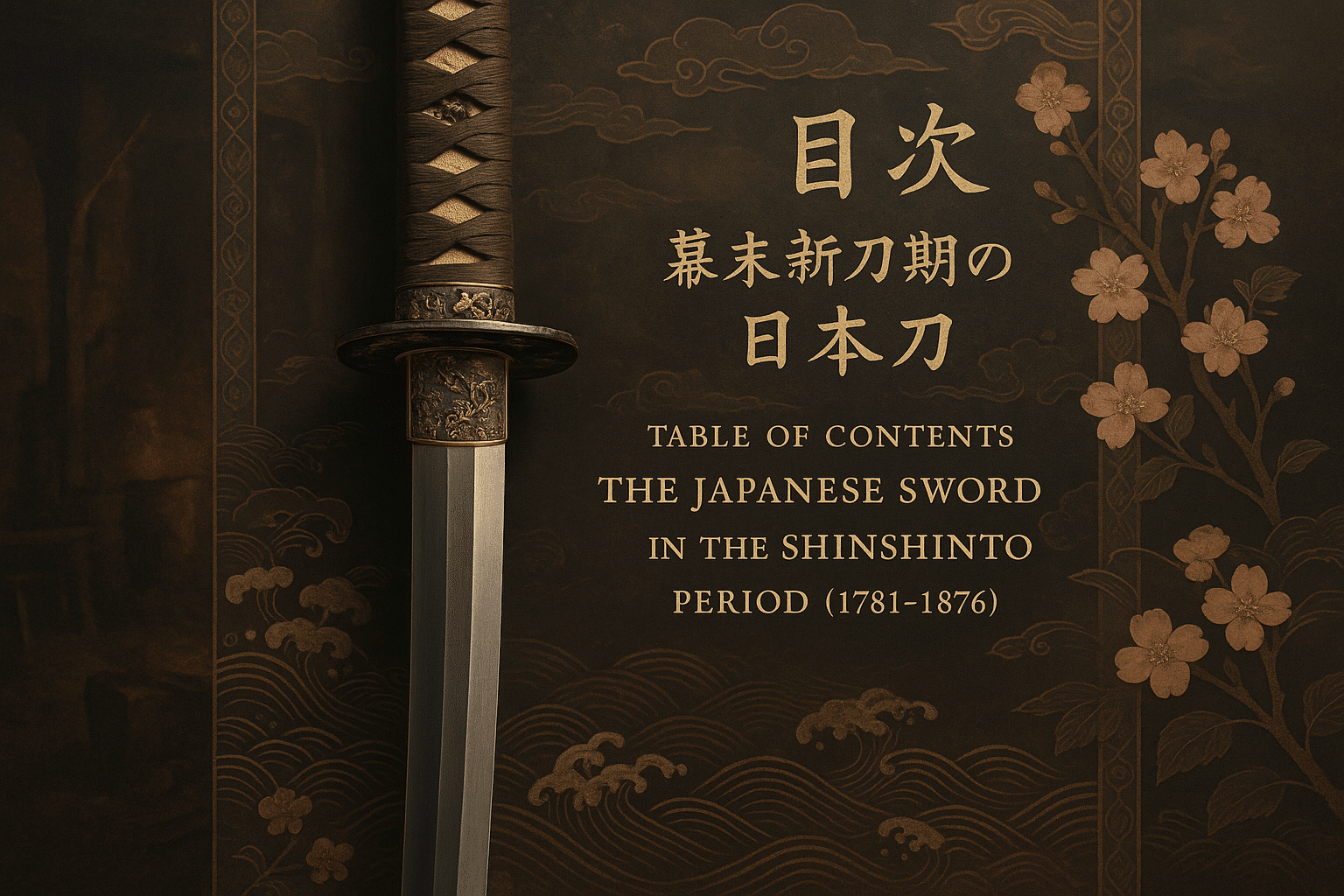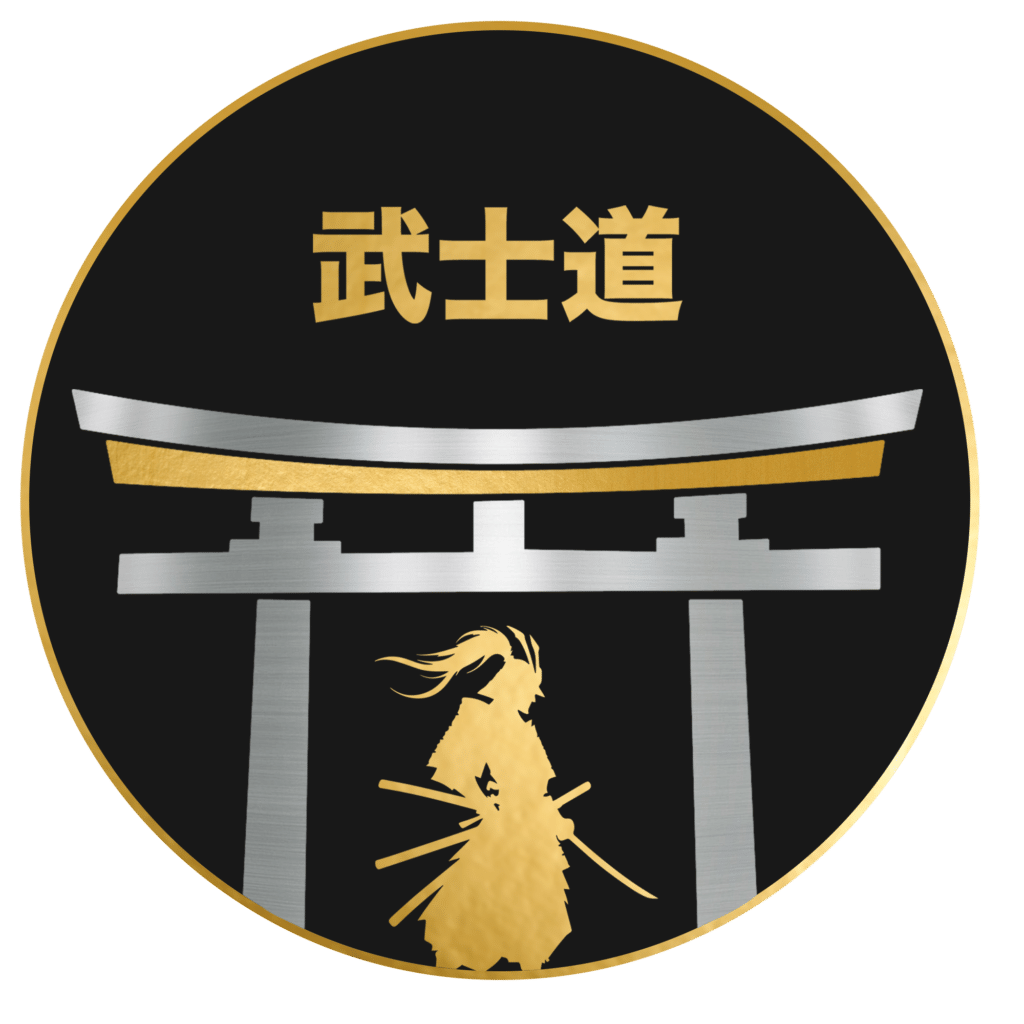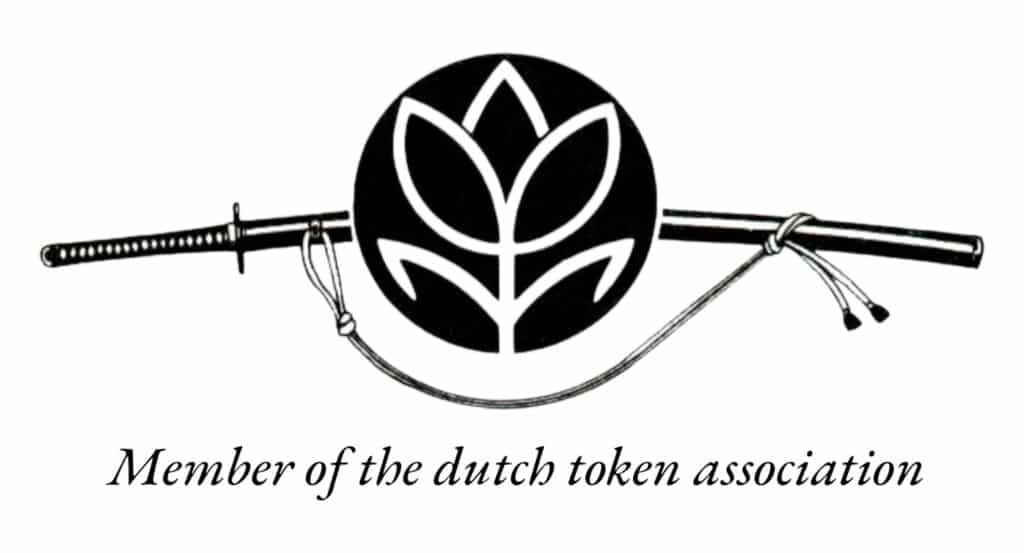Introduction: A Return to Form
After centuries of evolution, the art of Japanese sword-making entered a phase of revival during the Shinshinto period (1781–1876). Following the decline in craftsmanship that marked the late Edo period, this era signaled a deliberate return to classical forms and techniques, inspired by the revered smiths of the Kamakura and Muromachi periods. Amidst political stability under the Tokugawa shogunate and a renewed interest in samurai traditions, swordsmiths sought to recapture the spiritual and technical essence of Japan’s golden age of blades.
This article explores the cultural, artistic, and historical significance of the Shinshinto period, focusing on how master craftsmen reignited the soul of the Japanese sword. From stylistic revivals and notable smiths to the impact of modernization and the Meiji Restoration, we’ll trace how a new generation of swordsmiths honored the past while carving a place in a rapidly changing world.
Historical Context: Echoes of the Past
The late Edo period (1603–1868) was a time of dramatic transformation for Japan, shaped by social unrest, rigid class systems, and increasing pressure from foreign powers. By the Shinshinto period (1781–1876), the Tokugawa shogunate’s stronghold was weakening, and with it, the centuries-old peace that had dulled the utilitarian need for swords. Yet paradoxically, this decline spurred a revival—a resurgence of traditional sword-making not for battlefield necessity, but for cultural identity and aesthetic reverence.
Samurai, once fighters, had become bureaucrats. With duties shifting from combat to clerical roles, the sword evolved from weapon to symbol, embodying the samurai’s fading status and spiritual ethos. In response to this identity crisis, swordsmiths turned back to the golden ages—Koto (pre-1596) and Shinto (1596–1781)—meticulously studying and reviving these classical forms and forging styles. The art of sword-making became a form of cultural preservation, a means of reaffirming values like honor, discipline, and craftsmanship in a society on the brink of upheaval.
Externally, Japan was grappling with growing encroachments from Western nations. The eventual signing of unequal treaties and the looming collapse of the shogunate in 1868 jolted artisans and patriots alike. For many, crafting swords meant resisting foreign influence and asserting Japan’s enduring spirit. Thus, the Shinshinto revival was born not only from nostalgia but also from defiance—a reverberation of pride forged in steel.
The Swordsmiths: Masters of Revival
During the Shinshinto period (1781–1876), a remarkable group of swordsmiths emerged with a singular mission: to resurrect the glory of Japan’s classical blades. Known as masters of revival, these artisans weren’t simply preserving tradition—they were reinterpreting the past with reverence and precision, striving to emulate the prowess of the revered Koto (ancient swords) and Shinto (early modern swords) periods.
Prominent among them was Suishinshi Masahide, often hailed as the father of the Shinshinto movement. Disillusioned with the overly decorative and sometimes functionally inferior blades of the late-Edo period, Masahide championed a return to functionality, durability, and aesthetic balance. His philosophy emphasized masterful control over steel quality, hamon (temper lines), and hada (grain patterns), all while rooting his craft in the sword’s original martial purpose.
Following Masahide’s lead, smiths like Taikei Naotane and Kiyomaro delved deep into metallurgical experimentation. They blended traditional forging with refined folding techniques to replicate the rich, flowing patterns of Koto swords. Their blades often featured robust shapes, bold curvature, and intricate differential hardening, signaling both reverence for tradition and cutting-edge innovation.
The motivation behind this revival stemmed not only from technical dissatisfaction but also from a cultural identity crisis. As the samurai class lost its role amid social shifts and Western influence loomed, swordsmiths saw their work as an assertion of Japanese spirit—embodying dignity, continuity, and artistic excellence.
The result was a renaissance of craftsmanship that produced some of the finest swords ever forged in Japan, not only echoing the past but refining it for a changing world.
Stylistic Characteristics: Form and Function
Shinshinto swords (created from 1781 to 1876) are notable for their deliberate revival of classical forms combined with bold experimentation in both function and style. Unlike the more refined and often restrained aesthetics of earlier periods, Shinshinto blades exhibit a striking robustness. They often showcase wider mihaba (blade width), exaggerated sori (curvature), and pronounced kissaki (blade tips), giving them a powerful and commanding presence.
Artisans of the Shinshinto period drew inspiration from Kamakura and Nanbokucho-era swords, embracing the grandeur of older forms while applying contemporary forging techniques. This resulted in swords that were not only visually impressive but also improved in durability—a practical consideration during a time of relative peace when dueling and martial performances saw a resurgence.
One of the hallmark features of Shinshinto blades is the frequent use of wide hamon (temper lines), often styled in flamboyant midare (irregular) or choji (clove-shaped) patterns. These designs were more than ornamental; they reflected meticulous heat-treatment methods and served to highlight the smith’s technical mastery.
In terms of nakago (tang) shape and mei (signature carving), Shinshinto smiths often emulated famous lineages of the past, such as the Soshu or Bizen schools. However, their creativity often extended to the use of striking horimono (carvings) on the blade, including dragons, flames, or Sanskrit characters—features that added spiritual and dynamic dimensions to the sword’s aesthetic.
Together, these stylistic choices communicated both reverence for tradition and a desire to assert individuality. Shinshinto swords thus stand as unique expressions of form and function, bridging classical ideals with the ambitions of a changing era.
The Sword as Symbol: Changing Roles
As Japan entered the Shinshinto period (1781–1876), the symbolic importance of the sword underwent a profound transformation. No longer solely a weapon of necessity, the katana increasingly became a powerful emblem of identity, tradition, and social status—especially as the function of the samurai began to shift. Once revered primarily as elite warriors, samurai in the late Edo period found themselves more often acting as bureaucrats, scholars, or ceremonial figureheads under a regime that saw fewer actual battles.
This transition was mirrored in the swords they carried. The katana became more aesthetic, with smiths placing greater emphasis on artistry, forging techniques, and the display of classical styles over sheer battlefield functionality. Owning a beautifully crafted blade was both a nod to the cultural heritage of bushido and a visible affirmation of a samurai’s place within a rigid social hierarchy that was slowly dissolving.
As external pressures mounted—culminating in the arrival of Western powers and the eventual Meiji Restoration—the katana solidified its role as a symbol of national identity. In a period marked by uncertainty and change, the sword was not just a relic of past martial glory; it stood as a poignant marker of continuity, evoking an idealized warrior ethos in a time when that very notion was growing obsolete.
Notable Figures and Schools
During the Shinshinto period, a revival of classical sword-making traditions flourished, driven by a number of notable figures and regional schools that sought to recapture the grandeur of earlier eras. This period witnessed a conscious return to the aesthetics and techniques of the Kamakura and Muromachi periods, with swordsmiths paying homage to the great masters of the past while also infusing their own innovation.
Among the most celebrated swordsmiths of the Shinshinto era was Suishinshi Masahide (1750–1825), widely regarded as the father of the movement. Dissatisfied with contemporary sword styles, Masahide called for a return to the robust and artful designs of the Kamakura period, effectively launching a renaissance in Nihonto craftsmanship. His works often featured deep curvature and prominent hada (grain pattern), echoing the Soshu and Yamato traditions. His emphasis on traditional forging techniques left a lasting legacy and inspired a generation of smiths.
Another towering figure was Kiyomaro (1808–1854), sometimes referred to as the “Masamune of Shinshinto.” His blades are renowned for their bold hamon (temper lines) and impeccable construction, often reflecting the powerful and dynamic spirit of early Soshu blades. Based in Edo (modern-day Tokyo), Kiyomaro helped position the city as a central hub for spearheading technical excellence during this period.
Regional schools also played a vital role in shaping the Shinshinto landscape. The Edo school, spurred by the efforts of Masahide and his disciples, became a vibrant center for sword revival, focusing on precise craftsmanship and classical aesthetics. Meanwhile, the Osaka school, known for clean lines and refined workmanship, continued to influence emerging smiths with its emphasis on balance and beauty. In Kyushu, the Higo school remained active, preserving local forging traditions while adapting to the new revivalist trends.
Together, these individuals and schools not only revived the functional and aesthetic grandeur of earlier sword-making periods but also adapted them to the shifting cultural landscape of late Edo Japan. Their contributions ensured that, even amid an age of diminishing martial necessity, the Japanese sword retained its status as both a weapon and a profound symbol of craftsmanship and cultural identity.
Legacy and Transition
The Shinshinto period stands as a pivotal chapter in the history of the Japanese sword, embodying both reverence for tradition and the stirrings of transformation. In many ways, it served as a bridge—honoring the time-tested forging techniques and aesthetic principles of Japan’s classical eras while also responding to a rapidly changing society on the cusp of modernization.
Swordsmiths of the Shinshinto era looked backward to the esteemed craftsmanship of the Kamakura and Muromachi periods, striving to revive their excellence. Yet, they were also creating in a time when the sword’s role was shifting—from battlefield weapon to symbol of status, artistry, and identity. This dichotomy marked their work with a blend of historical homage and evolving purpose.
As Japan moved toward the Meiji Restoration and the samurai class saw its dissolution, the Shinshinto sword became a lasting emblem of cultural identity amid socio-political upheaval. Thus, the period’s legacy lies in its ability to preserve the spirit of the past while ushering the Japanese sword—and the society it represented—into a new era.





